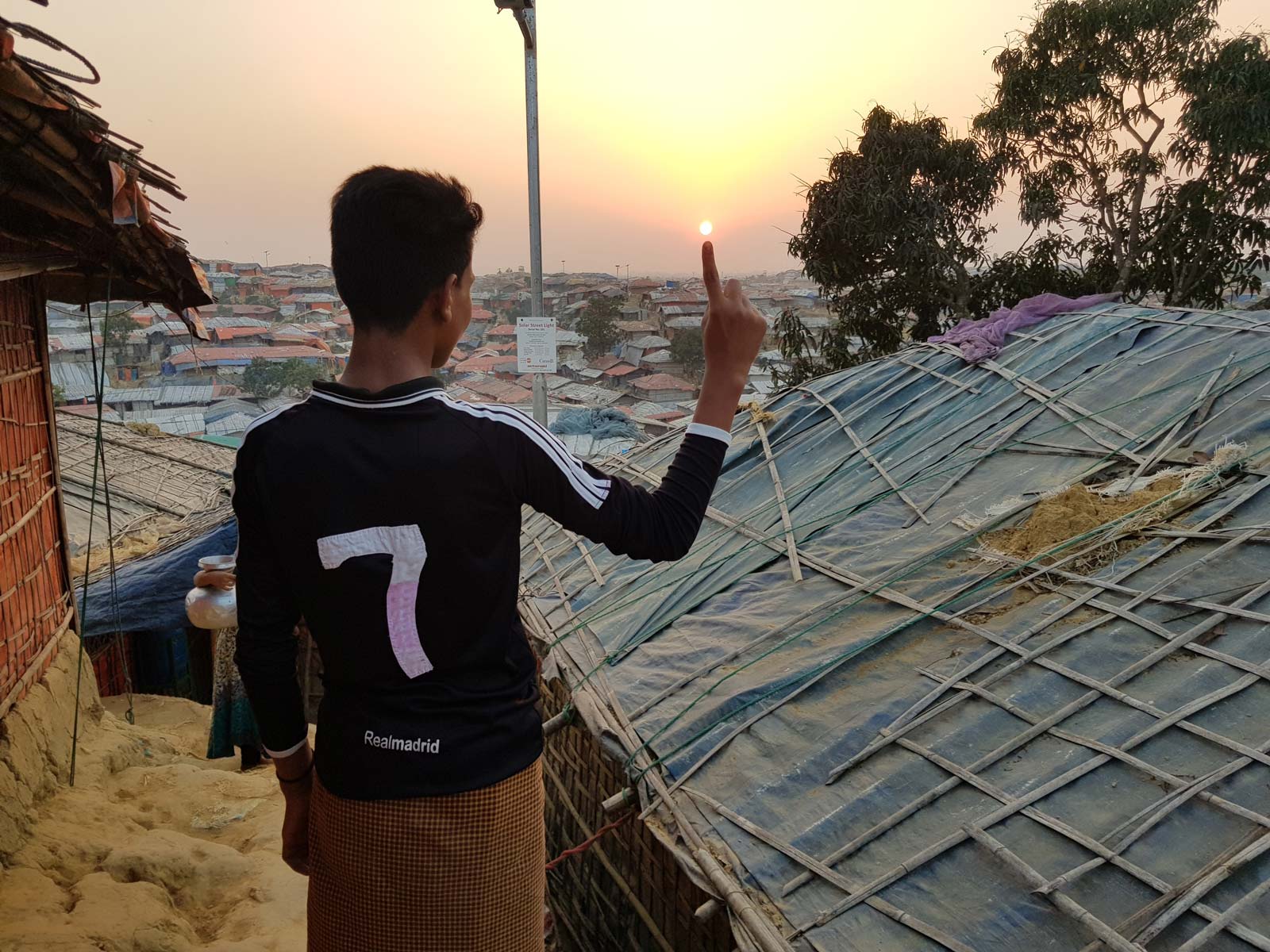If a picture tells a thousand words, then the work of Rohingya photographers Dil Kayas and Azimul Hasson speaks volumes.
“Media fellows” Dil and Azimul, along with fellow camp photographer Omal Khair, are part of a fellowship programme sponsored by advocacy groups Fortify Rights and Doha Debates. Equipped with mobile phones and taught the basics of photography, the three have set out to document day-to-day life in the refugee camps of Cox’s Bazar where they’ve lived since 2017 – the year a series of “clearance operations” carried out by the Burmese military drove roughly 750,000 Rohingya from their homes in Myanmar’s Rakhine state.
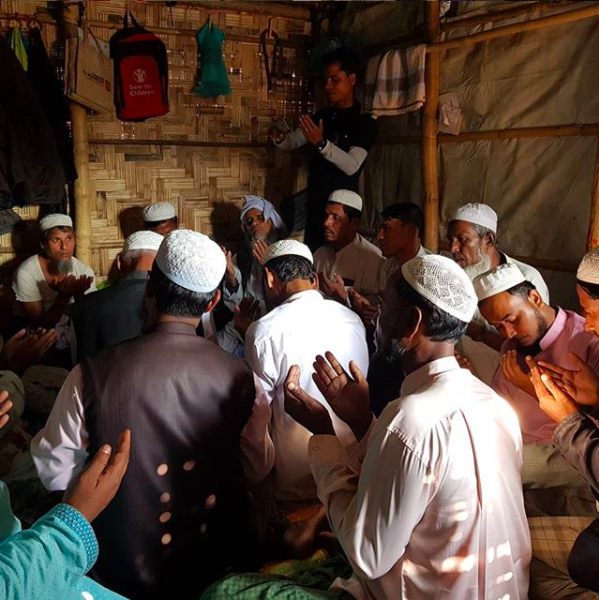
Now, as the camps of around one million people grapple with the additional challenge of keeping out COVID-19, the disease caused by the novel coronavirus, Dil and Azimul spoke with the Globe through a translator to discuss their work, their struggles and the realities of living in an uprooted society.
Dil, 26 and a mother of two, said she came to Camp 22 in Cox’s Bazar in September 2017. She and Azimut both are originally from Maungdaw Township in Rakhine. Dil says she’s wanted to be a photographer since childhood and, while she’s glad to now have the opportunity to do that work, she says the world she sees through the lens is often an unhappy one.
“In camp, people are suffering”, Dil said. “I want to tell their stories through my photography.”
Her latest shot captures a frame of the biggest story of the day; the global scramble to halt the spread of COVID-19. In the Instagram caption of a photo taken outside a medical clinic, Dil notes the social distancing tactic used elsewhere to prevent new infections of the respiratory illness is difficult to practice in the crowded conditions of camp.
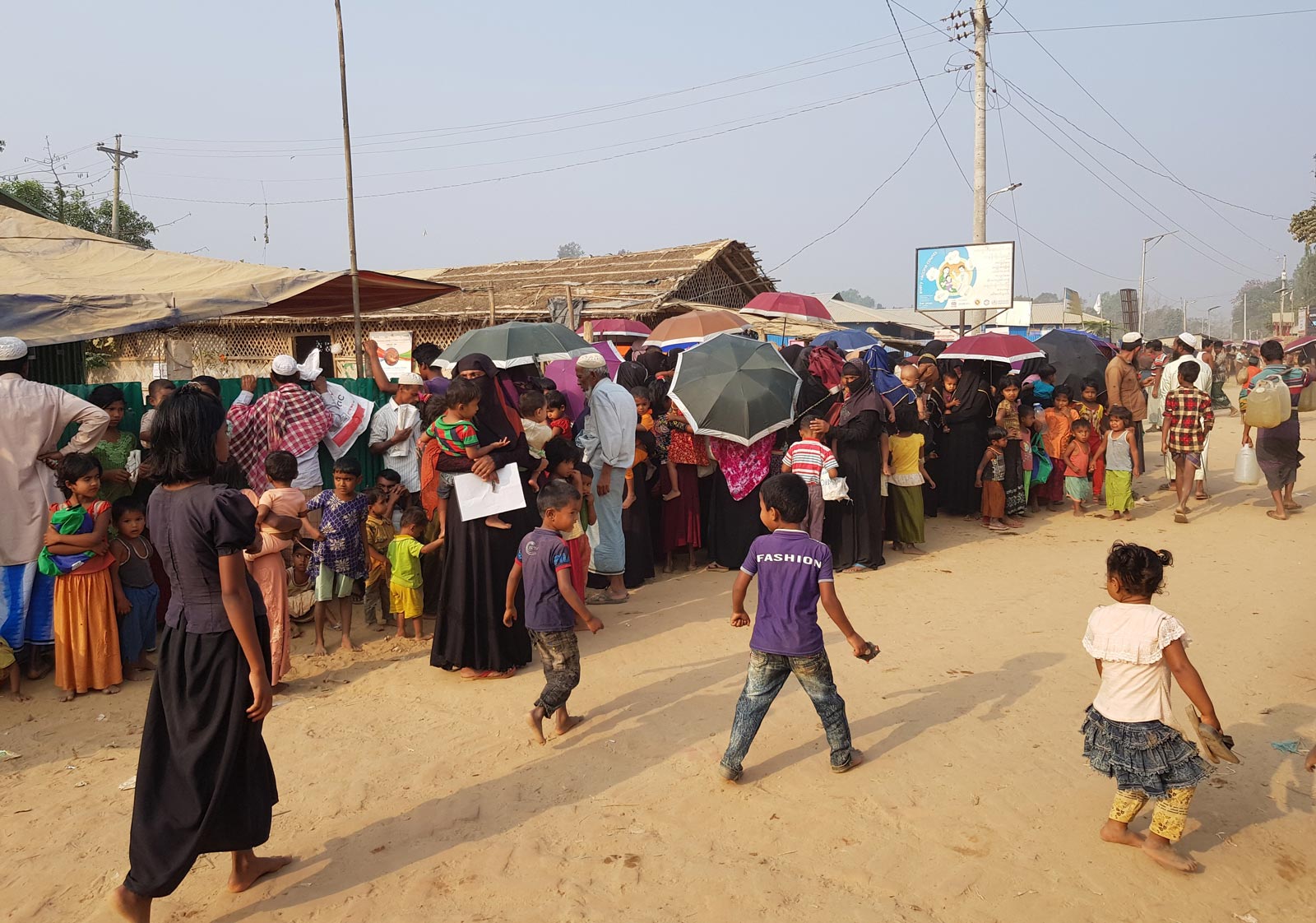
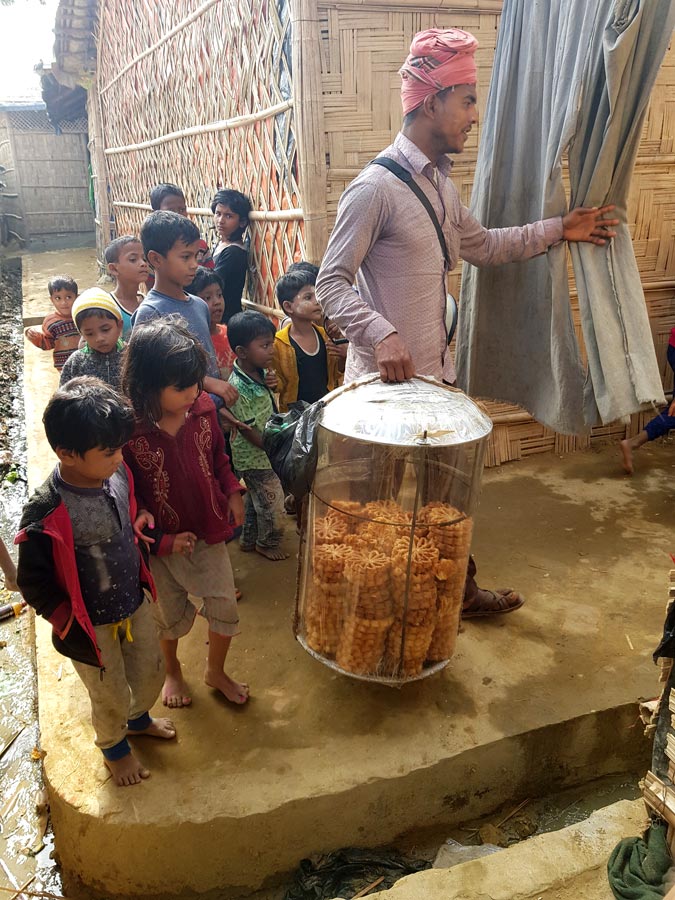
Left: Azimul’s Instagram caption reads: “Rohingya refugee kids are following a local Bangladeshi man who is selling snacks inside a refugee camp.”
Below: Dil writes: “Rohingya refugee in Cox’s Bazaar refugee camp suffering the internet shutdown since September 1, 2019.”
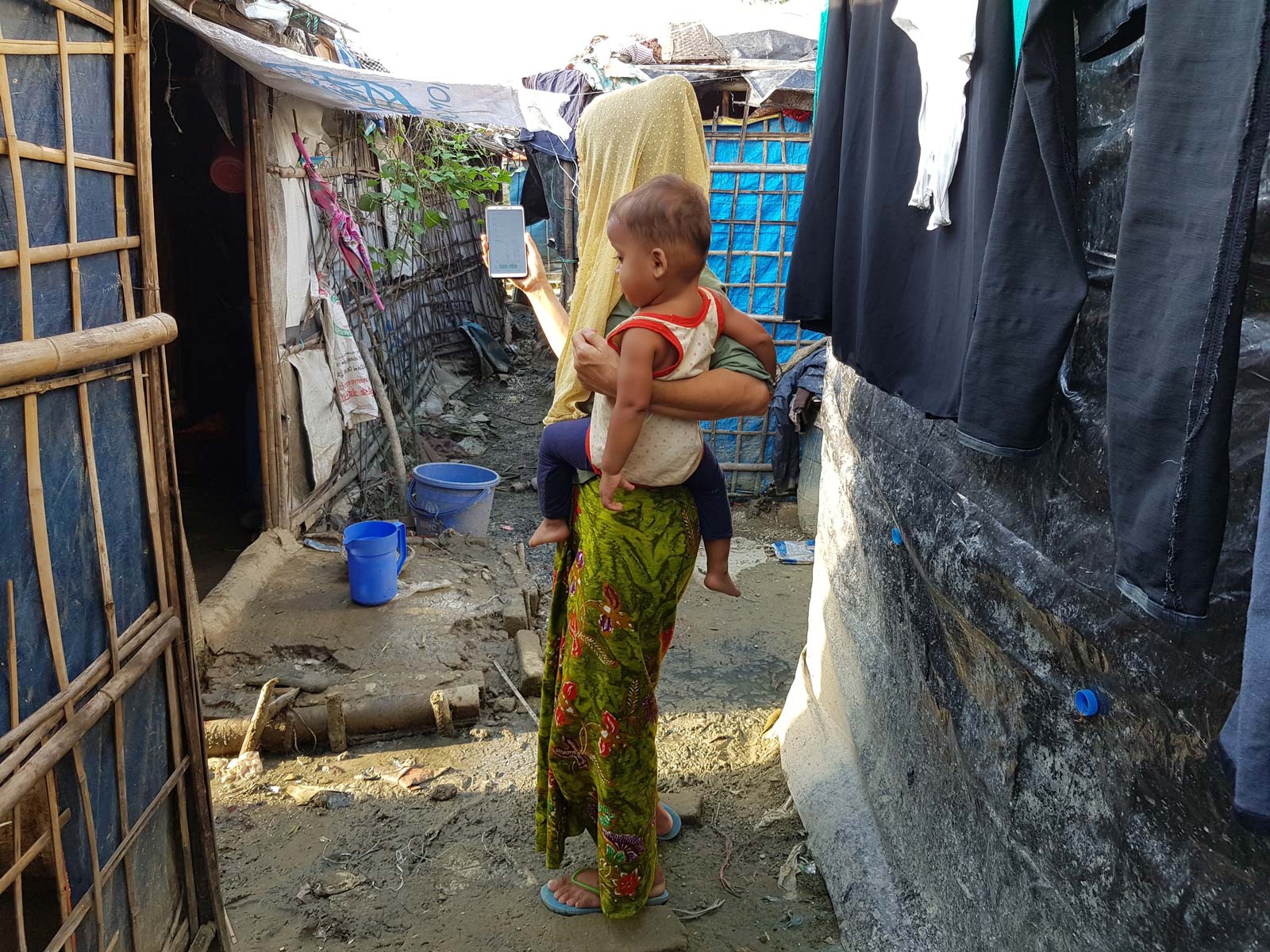
Experts have cautioned that the Rohingya living in the camps are in a precarious position, with little access to vital space and hygiene to stay safe through the pandemic.
Dr Husni Mubarak Zainal is a medical coordinator with humanitarian group Médecins Sans Frontières (MSF), or Doctors without Borders. In an email to the Globe, he described COVID-19 as a disease with “no known pre-immunity, no vaccine, no specific treatment” to which everyone is presumed to be susceptible.
Given the newness of the disease, Dr Zainal said global health experts are still learning how the virus that causes the disease is transmitted between people.
As of yet, there are no recorded cases of COVID-19 in the camps at Cox’s Bazar. But MSF and institutions like the World Health Organisation are working with the health ministry of host country Bangladesh, which declared a nation-wide lockdown after recording at least four deaths and 39 infections, to strengthen defences against the virus.
Dr Zainal said MSF is “extremely concerned” about the potential impact of the virus across the more vulnerable areas of Bangladesh, where 164.7 million people are squeezed into the 10th most densely populated nation on earth.
“The Rohingya are already living in difficult conditions and they face obstacles to access healthcare”, he said. “Quite simply: Social distancing is impossible in a refugee camp or a densely populated urban area. In Cox’s Bazar, around one million refugees are squeezed into just 26 square kilometres. People live side-by-side in overcrowded bamboo shelters where families share rooms and access to clean water is limited.”
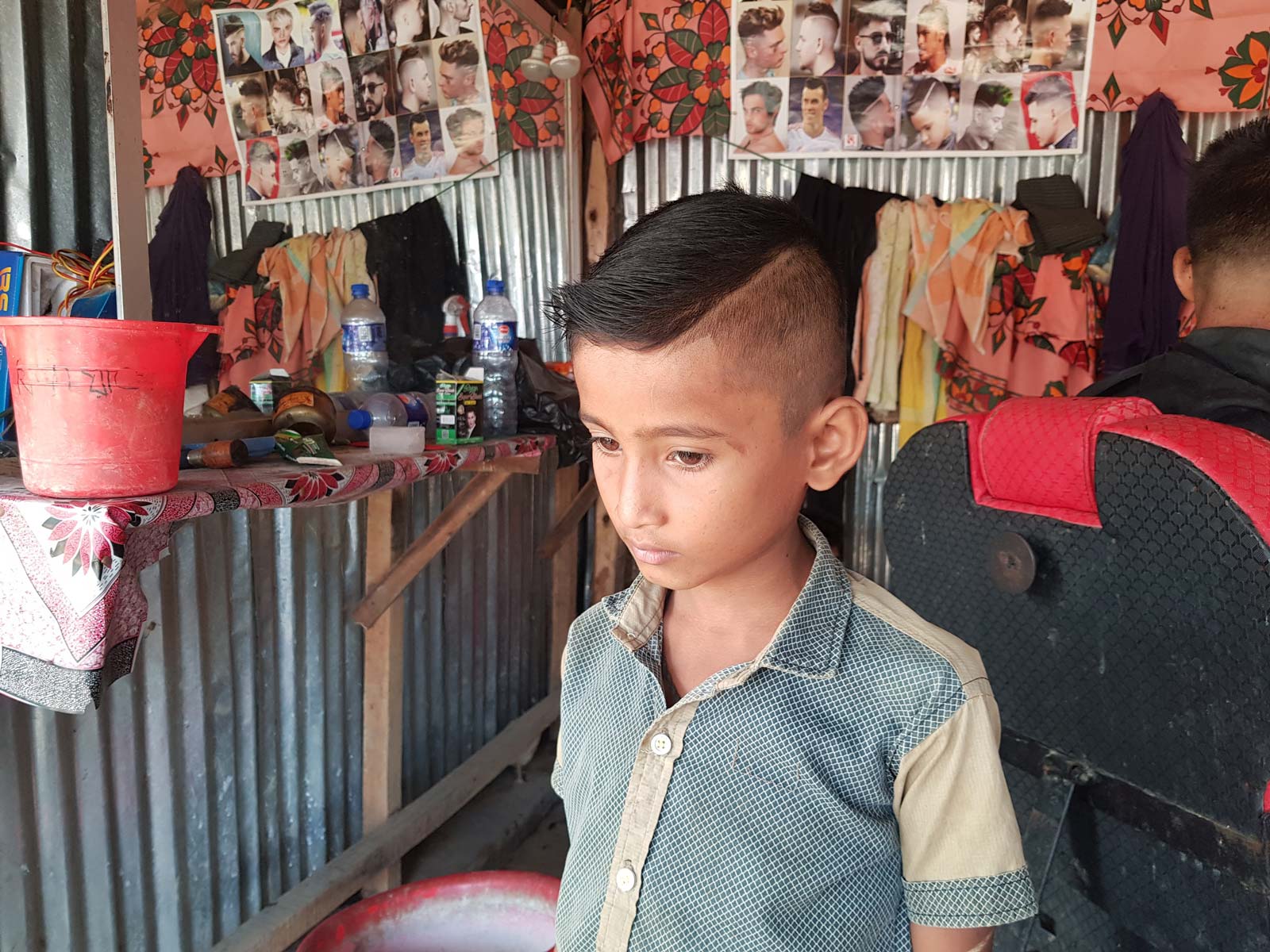
Above: Azimul writes: “A young Rohingya boy has a modern hair cut in a Rohingya barber.”
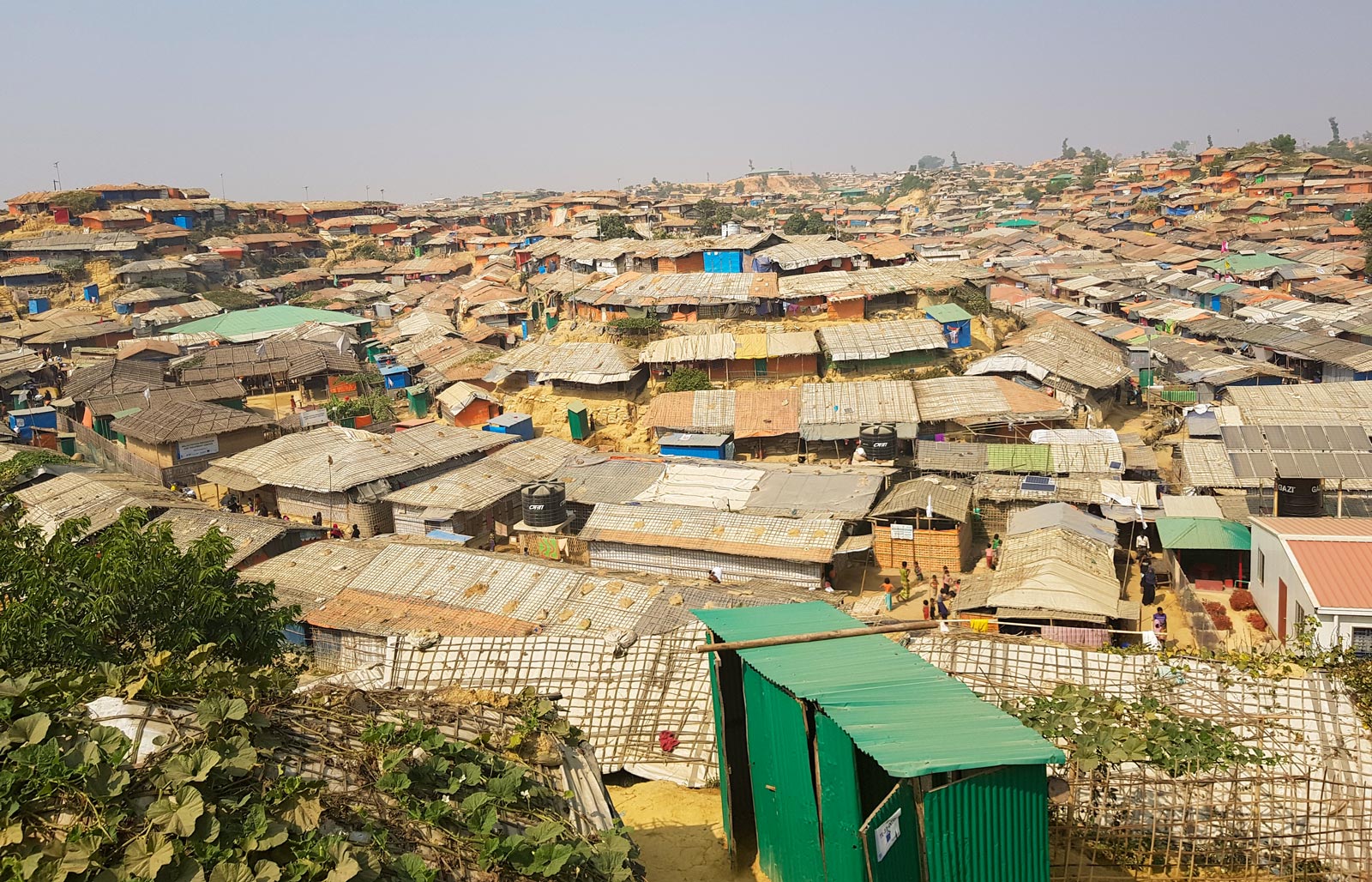
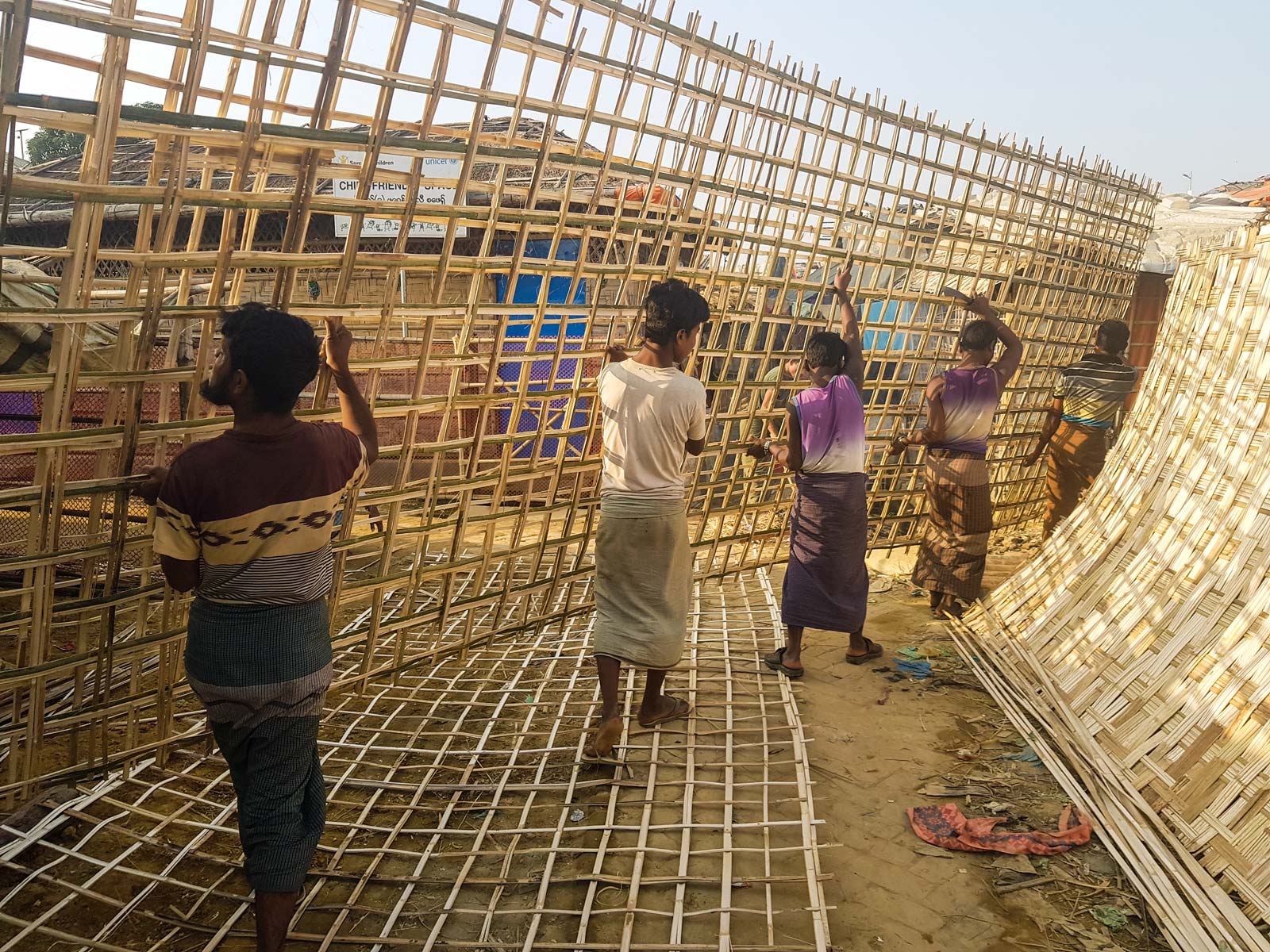
Many of those bamboo shelters feature prominently in the work of Rohingya photographer Azimut. His worldview is similar to that of Dil, and he says his goal with a camera is to show outsiders what conditions exist inside the camp.
“I take photos of the daily lives of refugees”, he said, all so that “people around the world can understand the situation we are in.”
The hardest photography is that of children under age who have to work in camps for their survival, instead of learning
Rohingya refugee photographer Dil Kayas
The images Azimut, Dil and Omal share on their Instagram pages – which command a combined following of nearly 5,000 people – are a blend of the mundane and profound. They offer an overview of sprawling rows of improvised housing, portraits of shyly smiling, playing or dozing children, and scenes of men at work, building homes and butchering cattle.
There are moments of levity; young boys playing ball, a groom at his wedding celebration, sitting atop the shoulders of a friend. But other pictures speak more directly to the hardships of camp life.
Dil, the young mother, says her favourite photos are of children, particularly when they can find books to read in the camp learning centres.
“The hardest photography is that of children under age who have to work in camps for their survival, instead of learning,” she said.
When asked about the photographs he most enjoyed, Azimut said he also preferred scenes of happy children and genuinely smiling people.
Still, when picking his own favourite images, he included a photograph of a funeral procession; a casket raised on the shoulders of grim-faced men, a reminder of the abrupt mortality of stateless life and, now, of the virus spreading outside camp borders.
“Sometimes I have moments of joy and beauty in my life but many others in camps are in difficulty”, Azimut said. “For that, I feel bad for my people.”
Azimul Hasson’s Instagram account featuring all of his photography documenting day-to-day life inside the Cox’s Bazar refugee camps can be found here, while Dil Kayas’ account can be found here, and Omal’s here.
